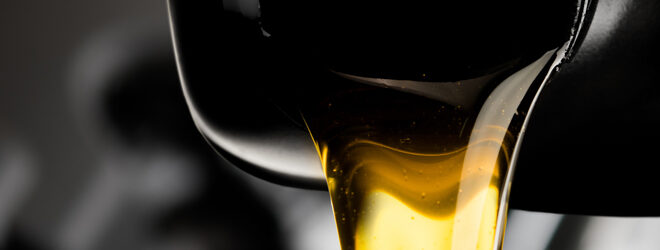Electro Discharge Machining (EDM) is the process of machining electrically conductive material by using precisely controlled sparks that occur between an electrode and a workpiece in the presence of a dielectric fluid. These machines typically include Computer Numerical Control (CNC) systems to allow for complex precision cutting. EDM machines often employ a combustible di-electric fluid (petroleum base or synthetic). Improper operation of an EDM machine or inadequate controls can result in ignition of the di-electric fluid.
These types of fires are difficult to extinguish manually due to configuration of the work tank and can quickly escalate to a large-scale loss involving both the subject machine and adjacent machining equipment. Unattended EDM units can malfunction and not only lead to property and equipment damage but can also interrupt your business operations leading to millions of dollars in damages.
Risk control measures to consider
The following are risk techniques applied to electro discharge machines utilizing a combustible di-electric fluid and will protect your high-value assets from a fire loss exposure:
- Select a di-electric fluid with an elevated flashpoint to reduce the ease of ignition. Di-electric oils are readily available with flashpoints in the range of 121°C (250°F) and provide an increased level of safety. Low flashpoint di-electric oils such as paraffin and mineral spirits should be avoided.
- Older electro discharge machines will not be equipped with current available safety controls and therefore present an increased fire-operating hazard. Older machines should not be operated in an unattended mode or during “lights out”. Retrofitting of current available safety controls may be possible and consultation should be undertaken with the OEM and control vendors.
- Avoid “blow machining” as the potential for fire can increase. Always keep a minimum of 50 mm (2”) of oil between the fluid level and the workpiece top to prevent heating of any vapours above the fluid flashpoint.
- Install a low oil level interlock designed to automatically de-energize the machine and place a drop in di-electric fluid level. Increased reliability can be achieved through the installation of redundant control methods.
- Install a two-stage di-electric oil temperature sensor. The first stage will activate at a preset temperature above the normal operating oil temperature range and a warning will be displayed on the readout. The second stage will activate at a preset temperature with the machine unit automatically de-energized. For example, for a 121°C (250°F) flashpoint di-electric fluid, a 93°C (200°F) setting for the second stage provides a 10°C (50°F) range of safety.
- Protect each sinker EDM machine with an automatic fire extinguishing system utilizing a clean extinguishing agent, that is, carbon dioxide, FM 200, DuPont FE 227, etc. A clean extinguishing agent will ensure that the di-electric oil will not be contaminated as a result of agent discharge and thus requiring subsequent replacement at a high cost.
- The use of a fixed temperature heat detector – detecting 93°C (200°F) and above – or infrared heat detection system will help to protect against false discharge scenarios which can be experienced with other methods of detection. As an example, an ultraviolet detection mode can potentially be triggered by other light sources on the machining floor such as welding processes, even at extended distances from an operating EDM machine.
- Operating EDM machines in an unattended “lights out” basis increases the risk as there are no operators to monitor machine operation and provide direct intervention in a fire scenario. Eliminate or minimize the operation of EDM machines on a “lights out” basis. Where a decision to operate in this mode is authorized, activation of an automatic fire extinguishing system should result in the transmittal of an alarm to a monitoring station and dispatch of the local fire department.
- Installation of an anti-arc control will protect against debris or a broken carbide electrode located within the spark gap. This type of blockage within the spark gap can result in continuous arcing and elevation of di-electric oil temperature. An anti-arc control would detect this scenario and automatically back off the electrode allowing the debris to clear.
- Install appropriate portable fire extinguishers within the EDM area in accordance with the National Fire Code of Canada (NFCC).
- Inform your local fire department of the location and system capacity of your EDMs. Provide a tour of the facility inclusive of EDM risk techniques applied for the safe operation of machine units.
Inspection and maintenance
Electro Discharge machines should be inspected and maintained in accordance with the manufacturer’s directed intervals and should include all safety-related features. An effective preventive maintenance program will ensure ongoing operation of all safety-related features that have been incorporated into the machine.
Automatic fire extinguishing systems should be inspected and certified on a regular basis in accordance with the applicable National Fire Code of Canada (NFCC) standard by an authorized contractor to ensure reliability and proper working order. As a general rule of thumb, fire extinguishing systems should be inspected and certified on a minimum annual basis.
The fire extinguishing system should be visually inspected daily, inclusive of system status “indication lamp” to ensure the fire extinguisher function is normal. As well, the pressure gauge reading associated with the extinguishing agent should be in the proper range.
Operators of electro discharge machines should be fully trained on best practices of machine operation and knowledgeable of all safety devices associated. A safety culture should be promoted, and potential bypassing of safety controls prohibited.
Minimize fire risk and maximize uptime
EDM machines operated without the appropriate operator training or fire and safety systems pose a significant fire risk. The end result being property damage severity and associated business interruption. Proper protection of EDM machines through application of the above risk techniques will ensure jobs are completed on time and that customer satisfaction remains high.
Protect yourself with business insurance
EDM-related fires can lead to substantial property damage and business disruption. Having the right business insurance and safety controls in place is key to protecting your operations. To learn more, visit our Manufacturing Insurance page or contact your Risk Services Consultant.




